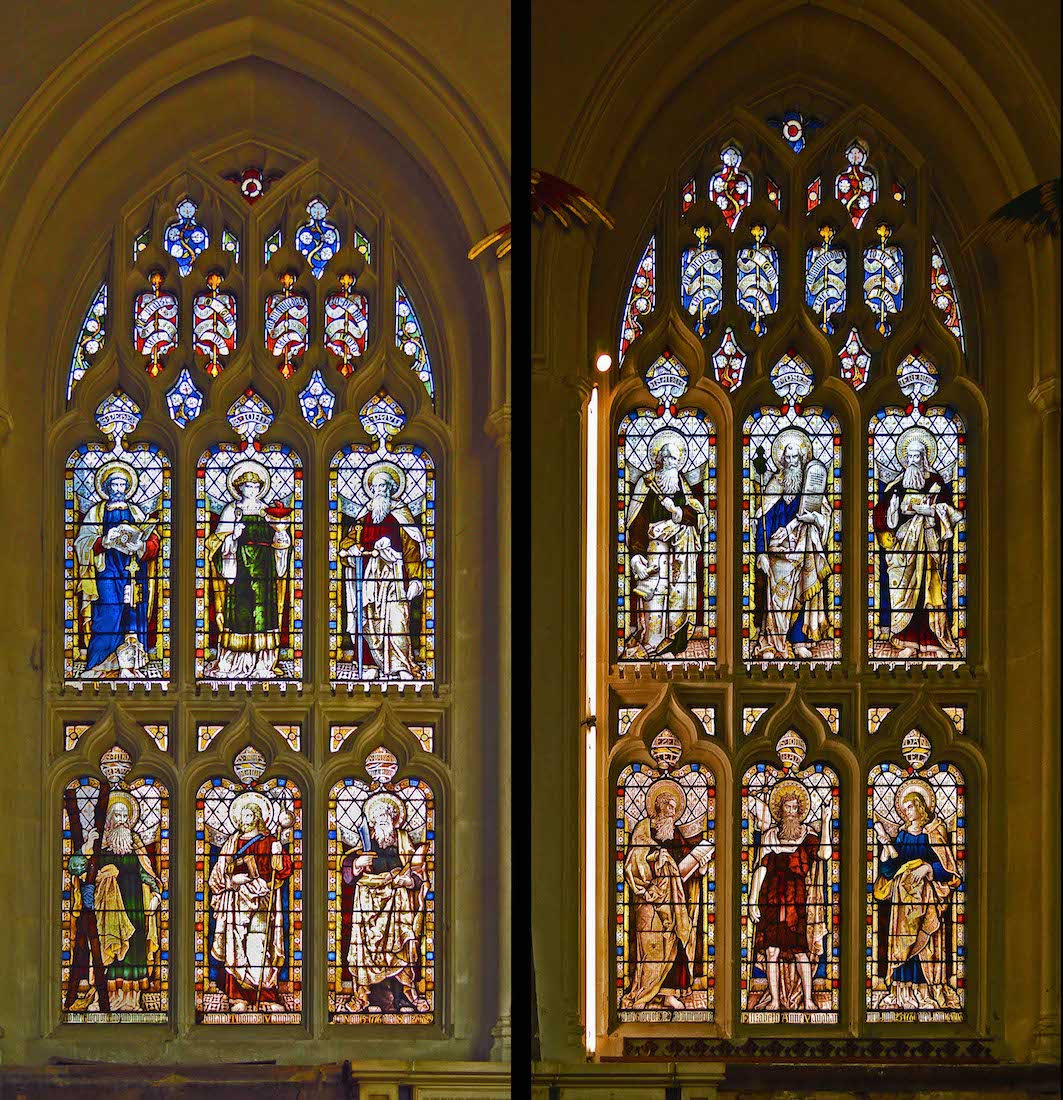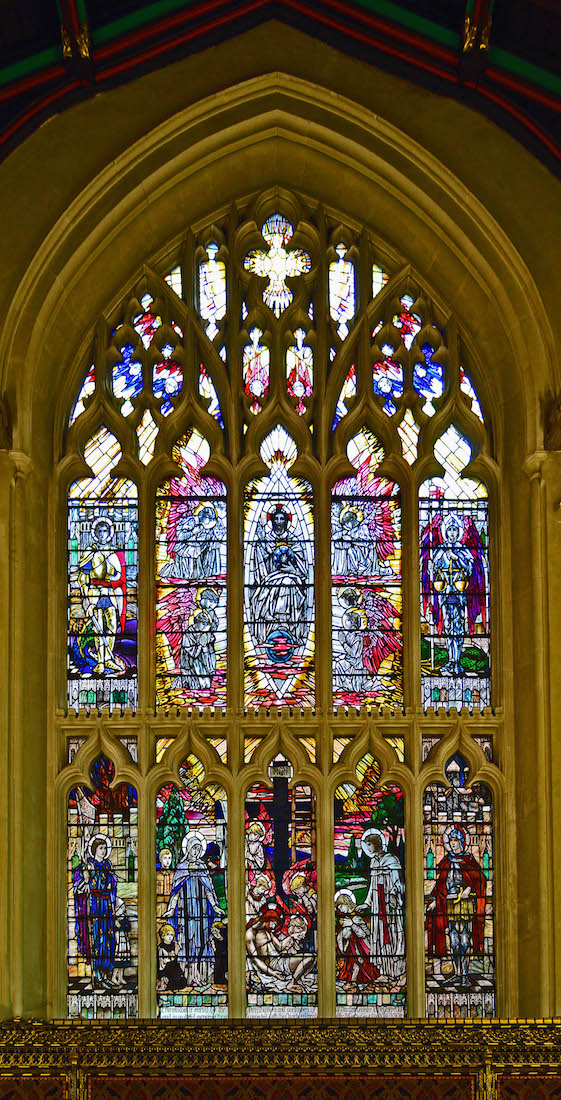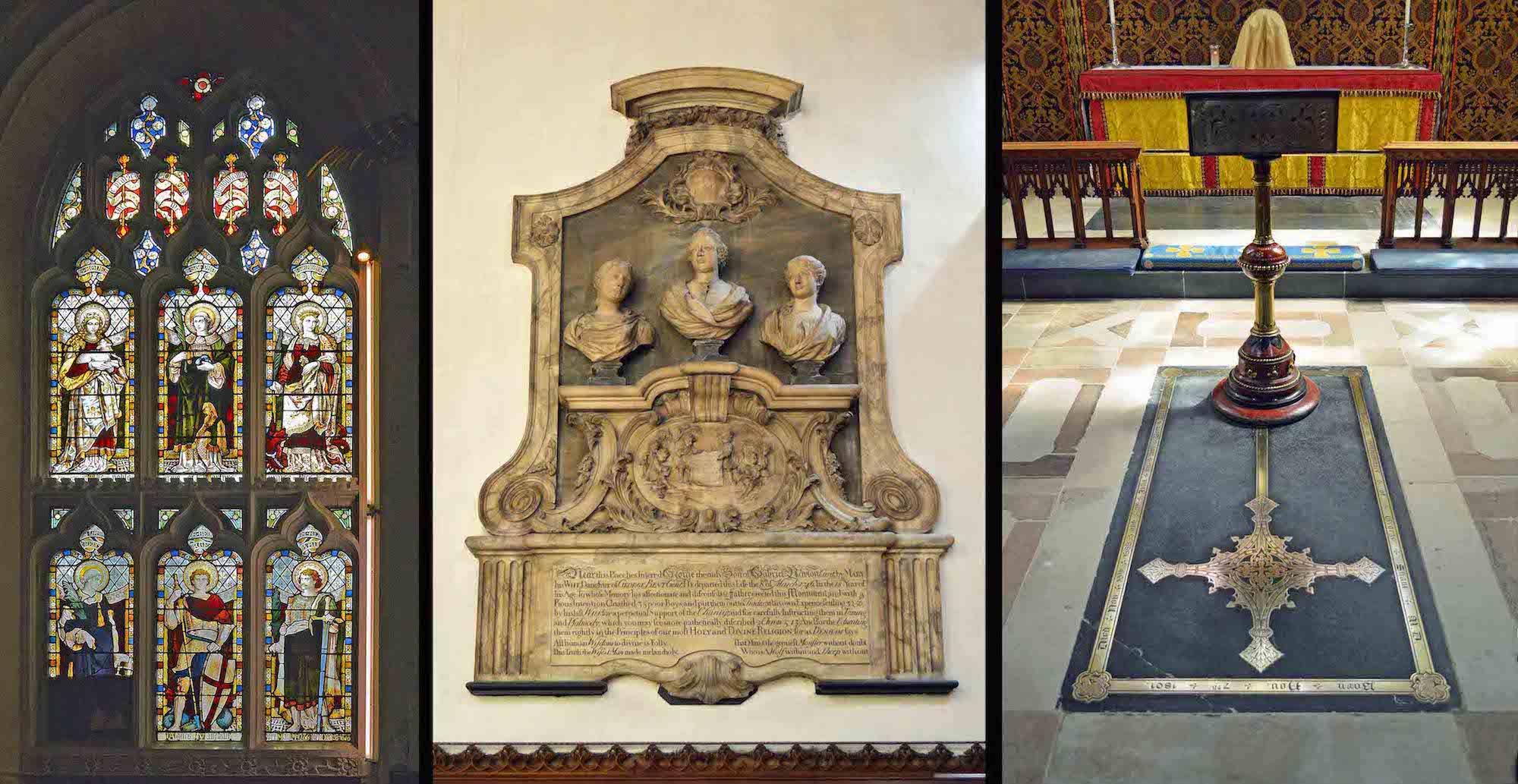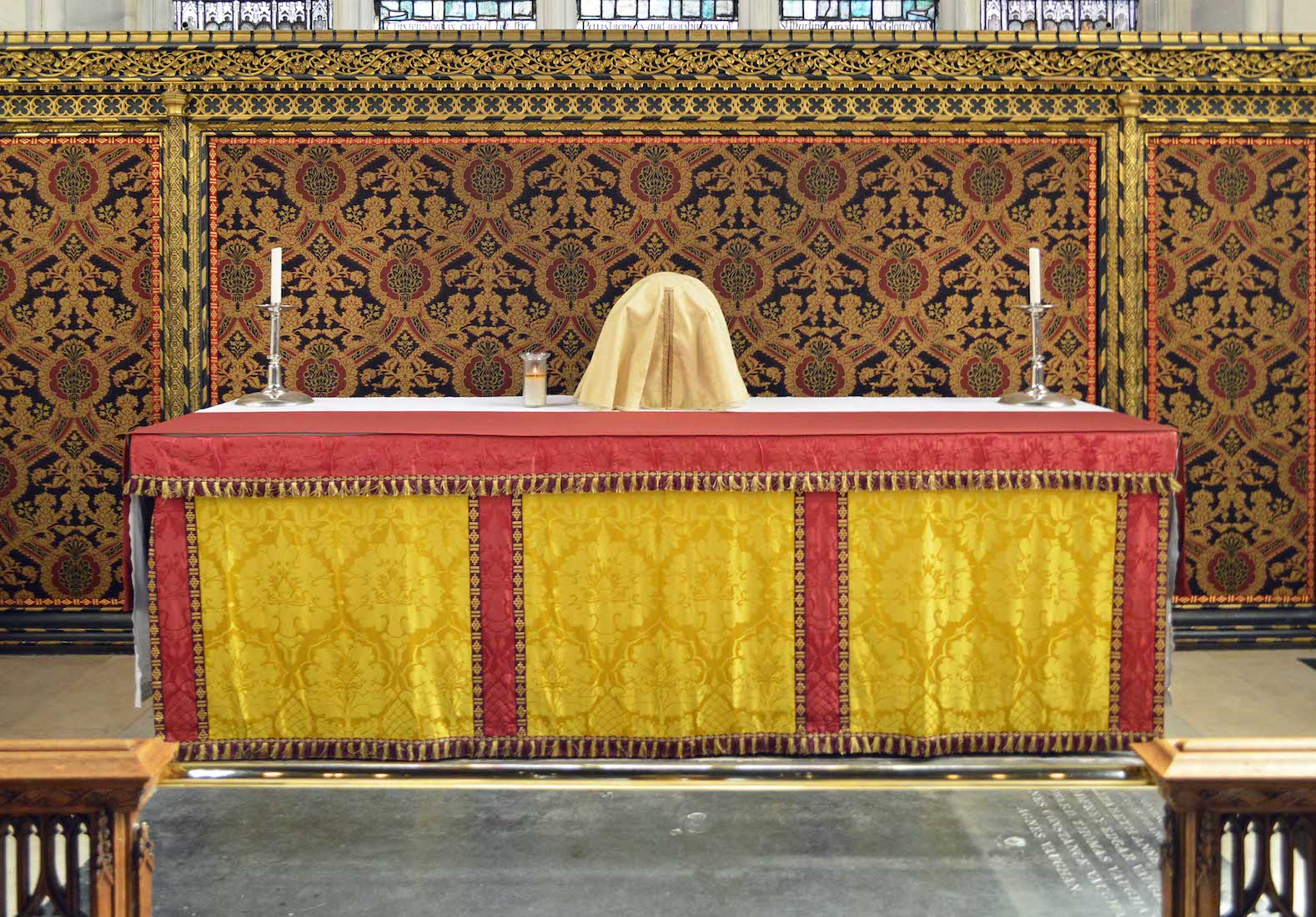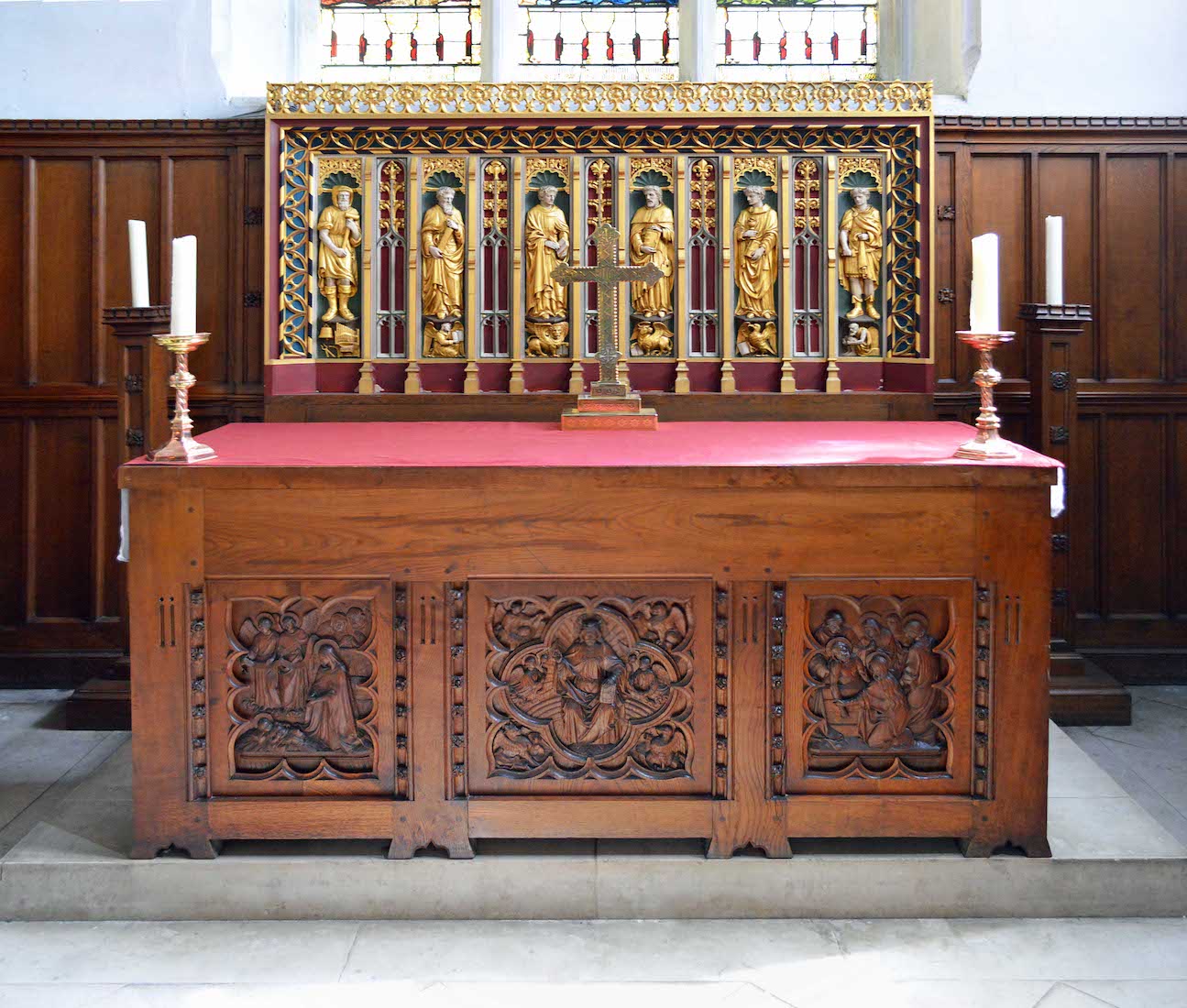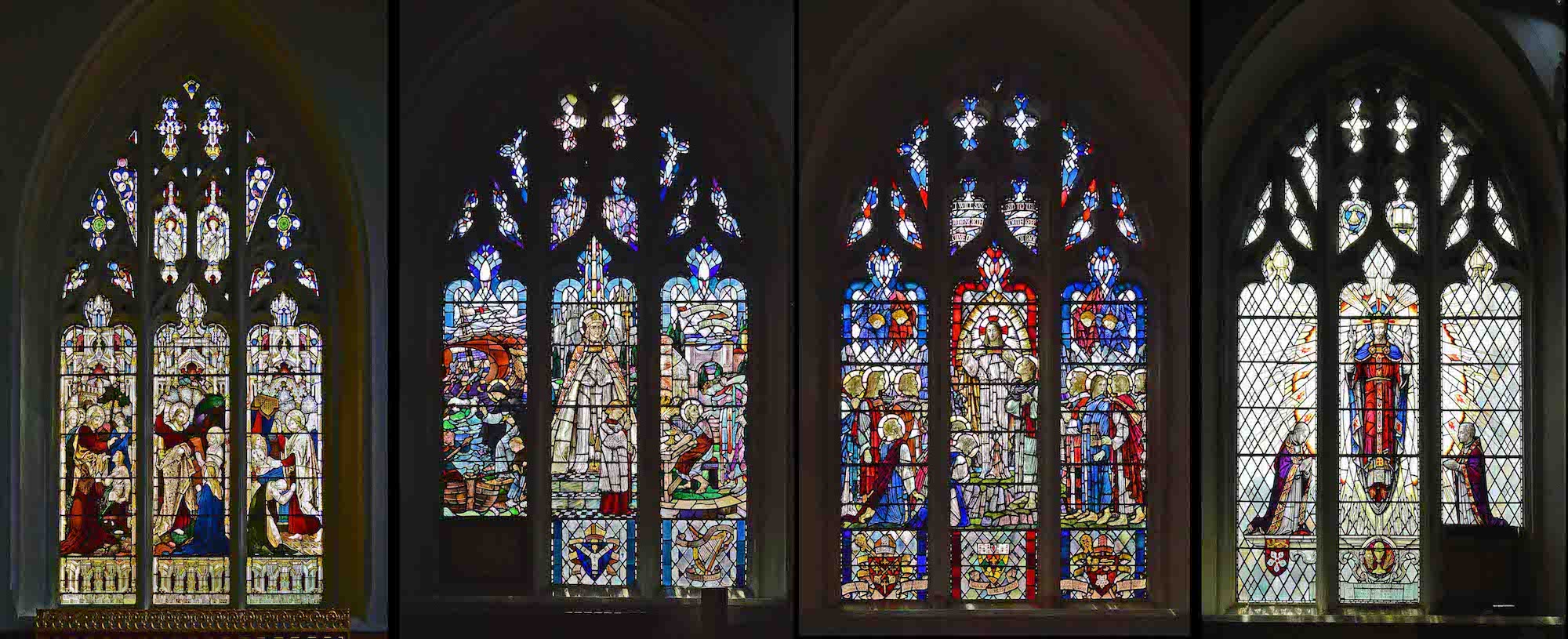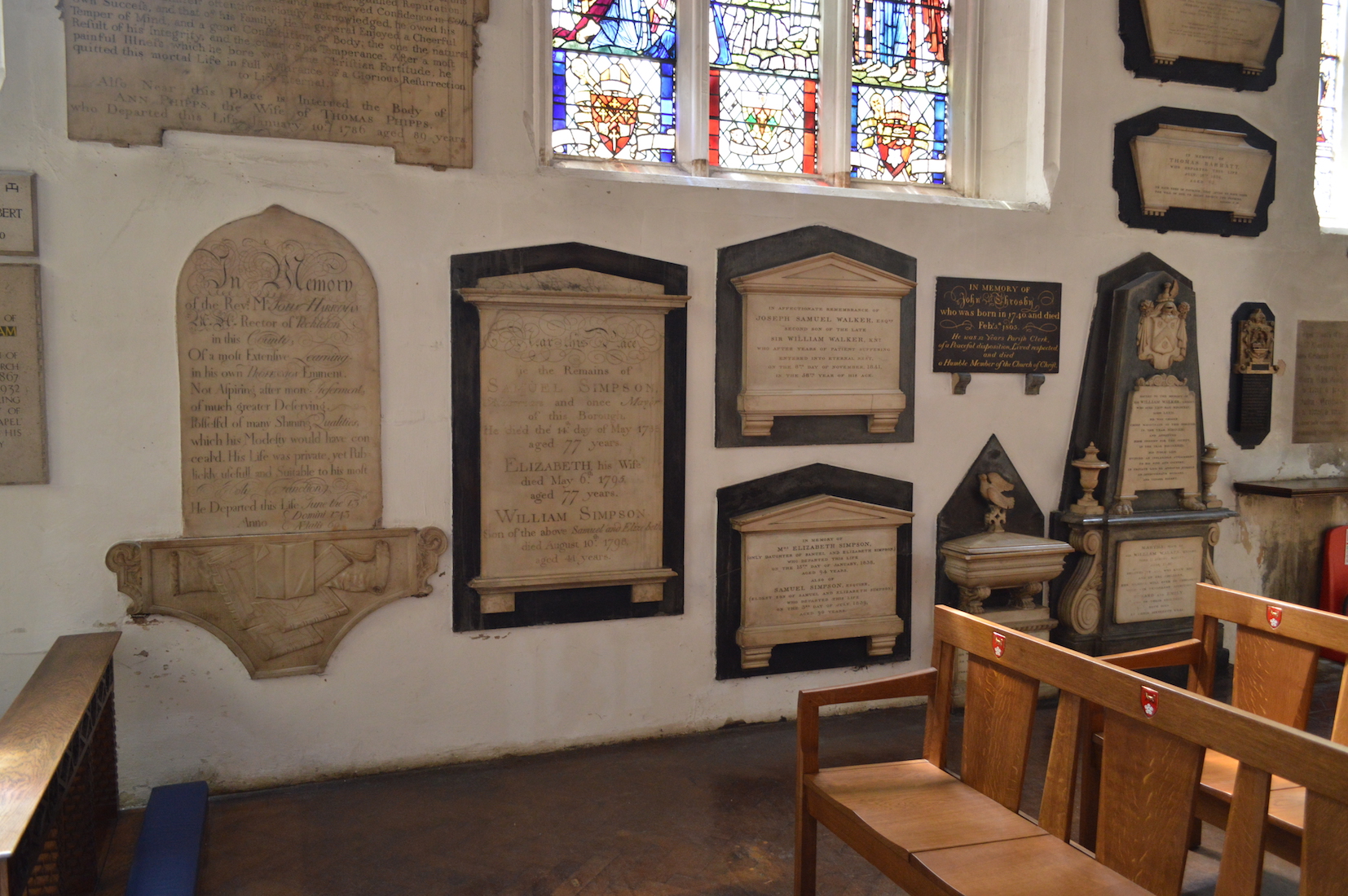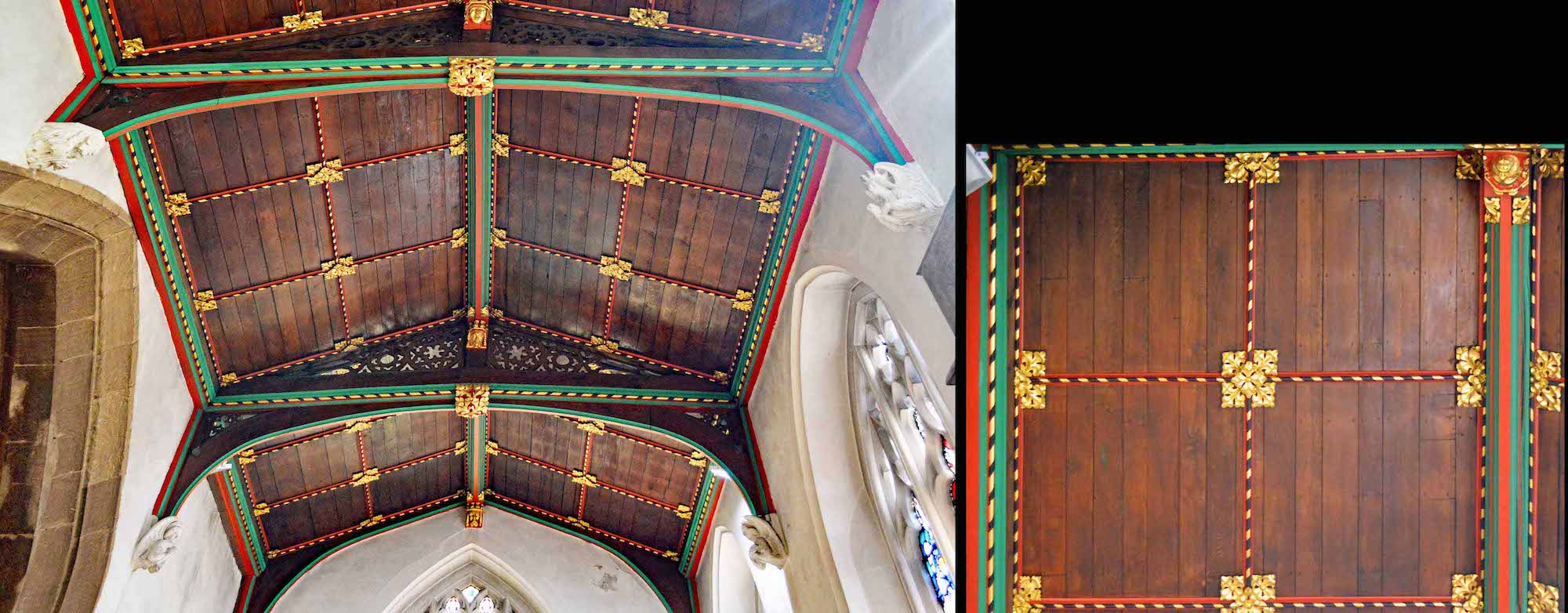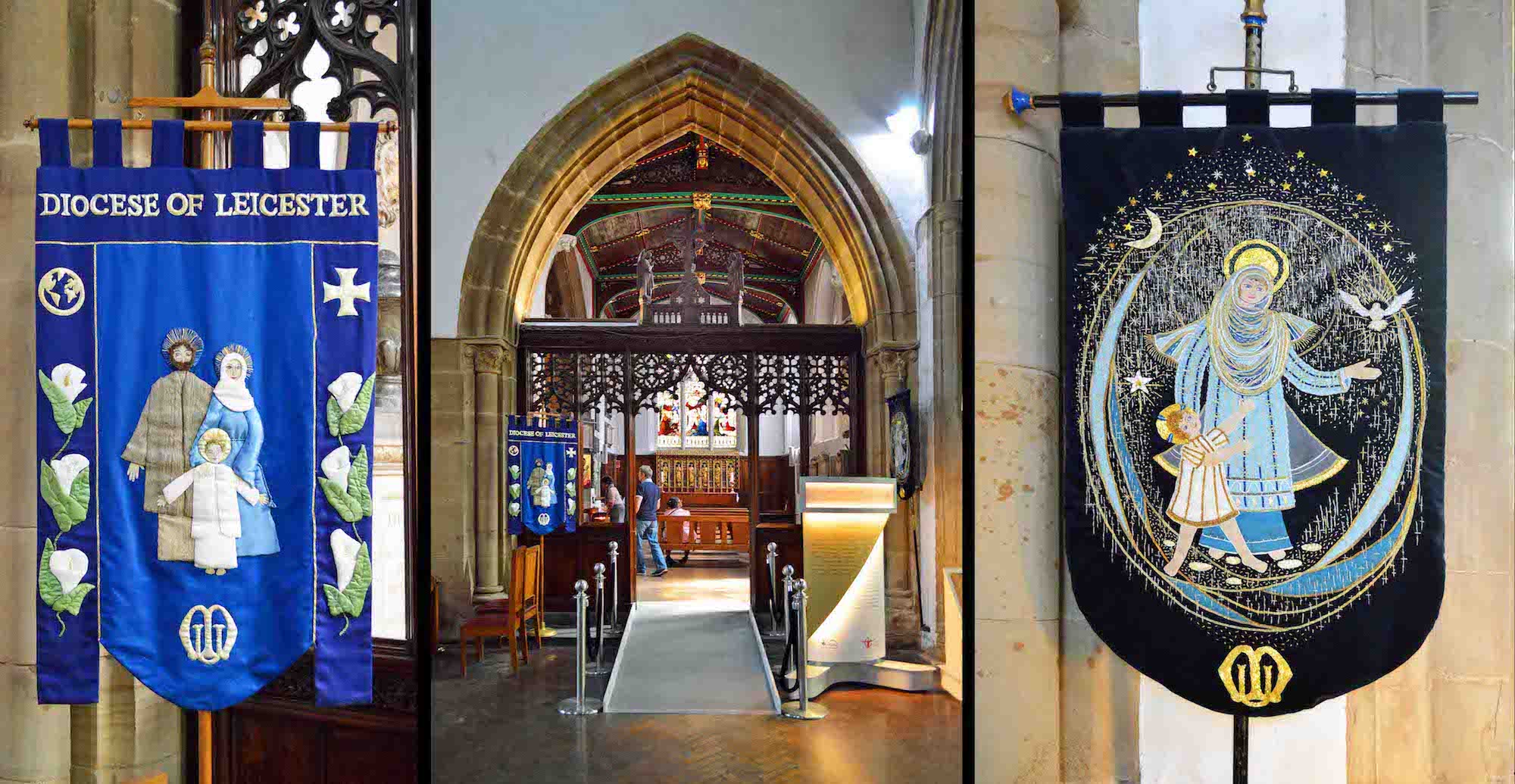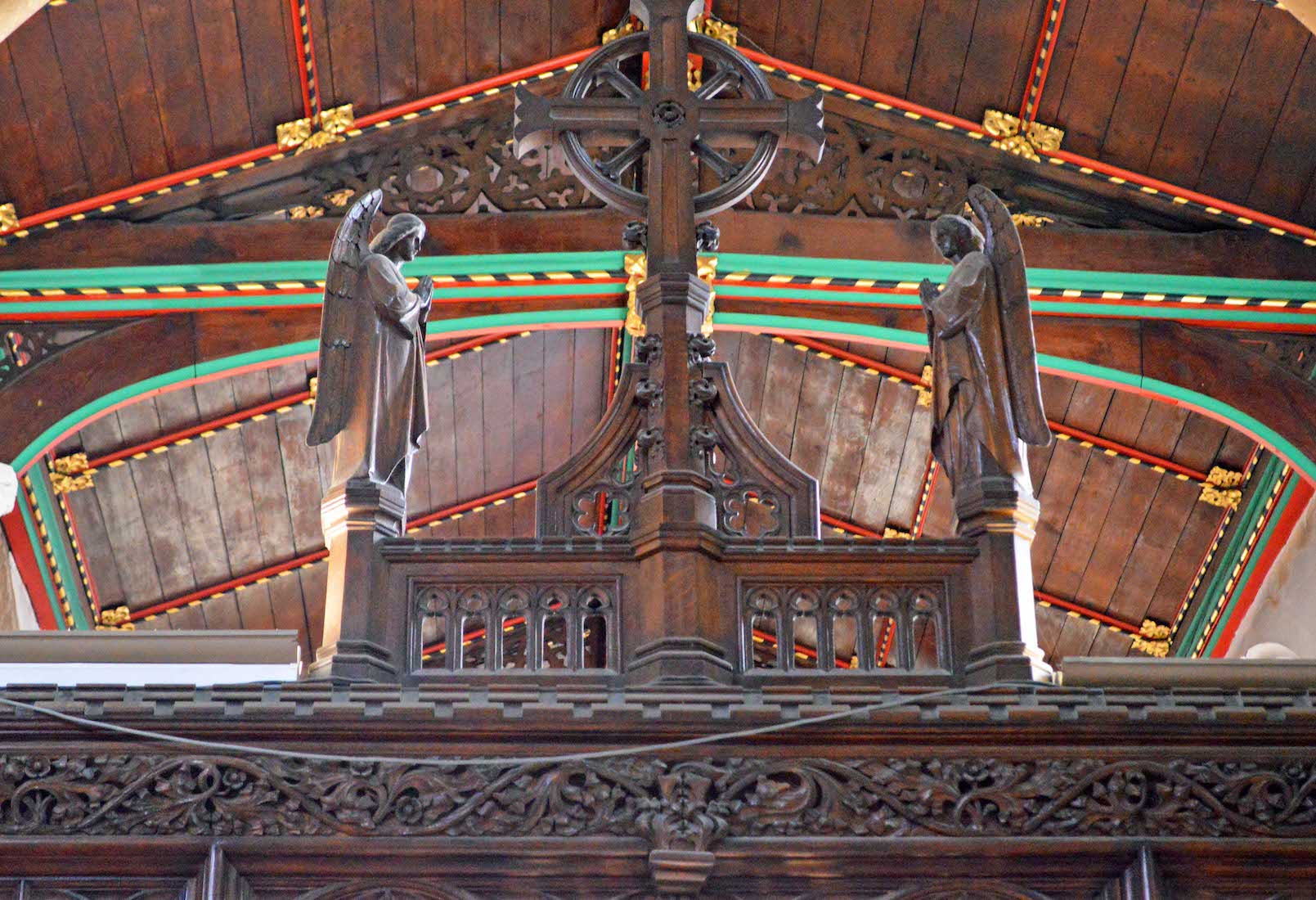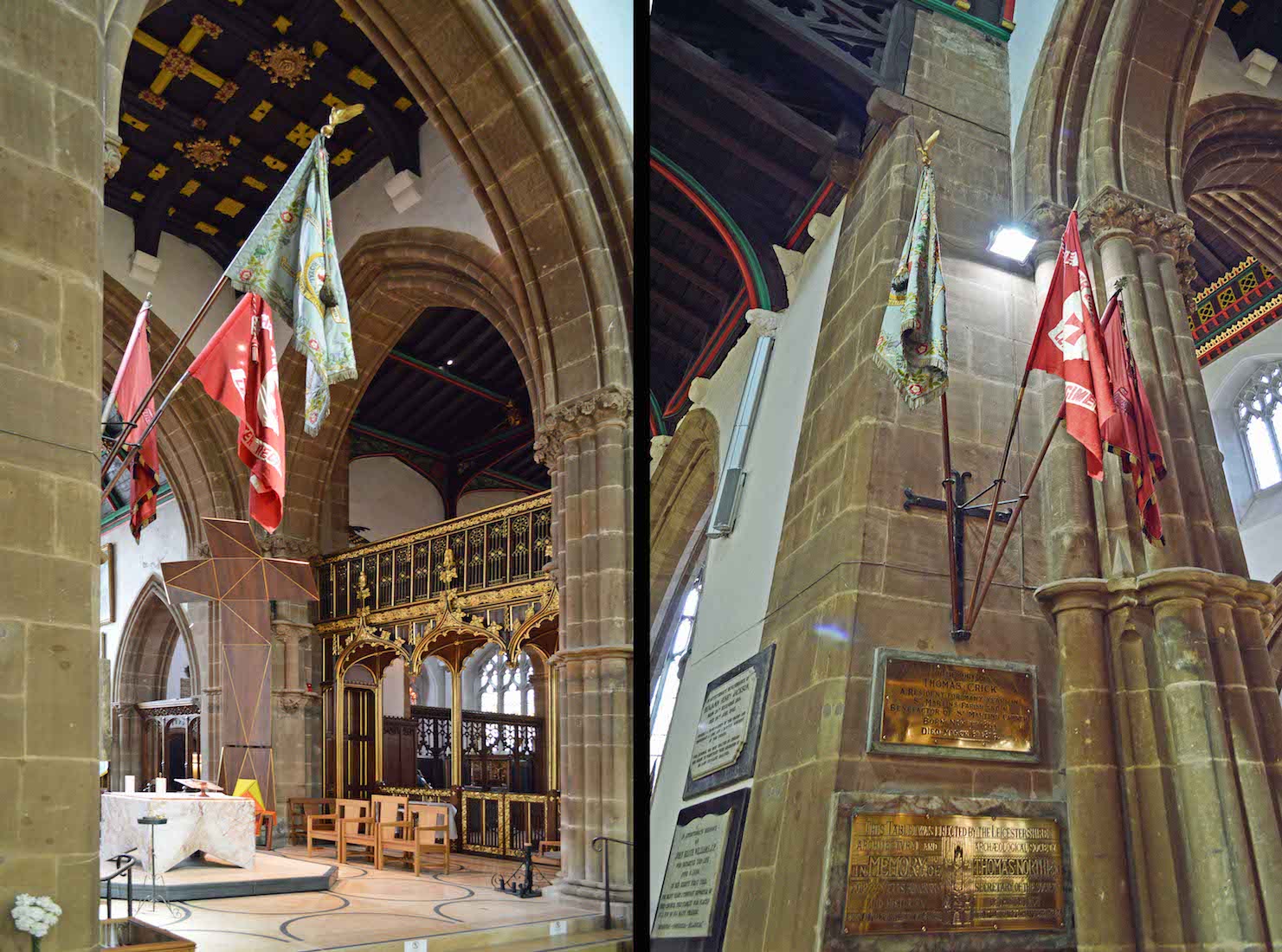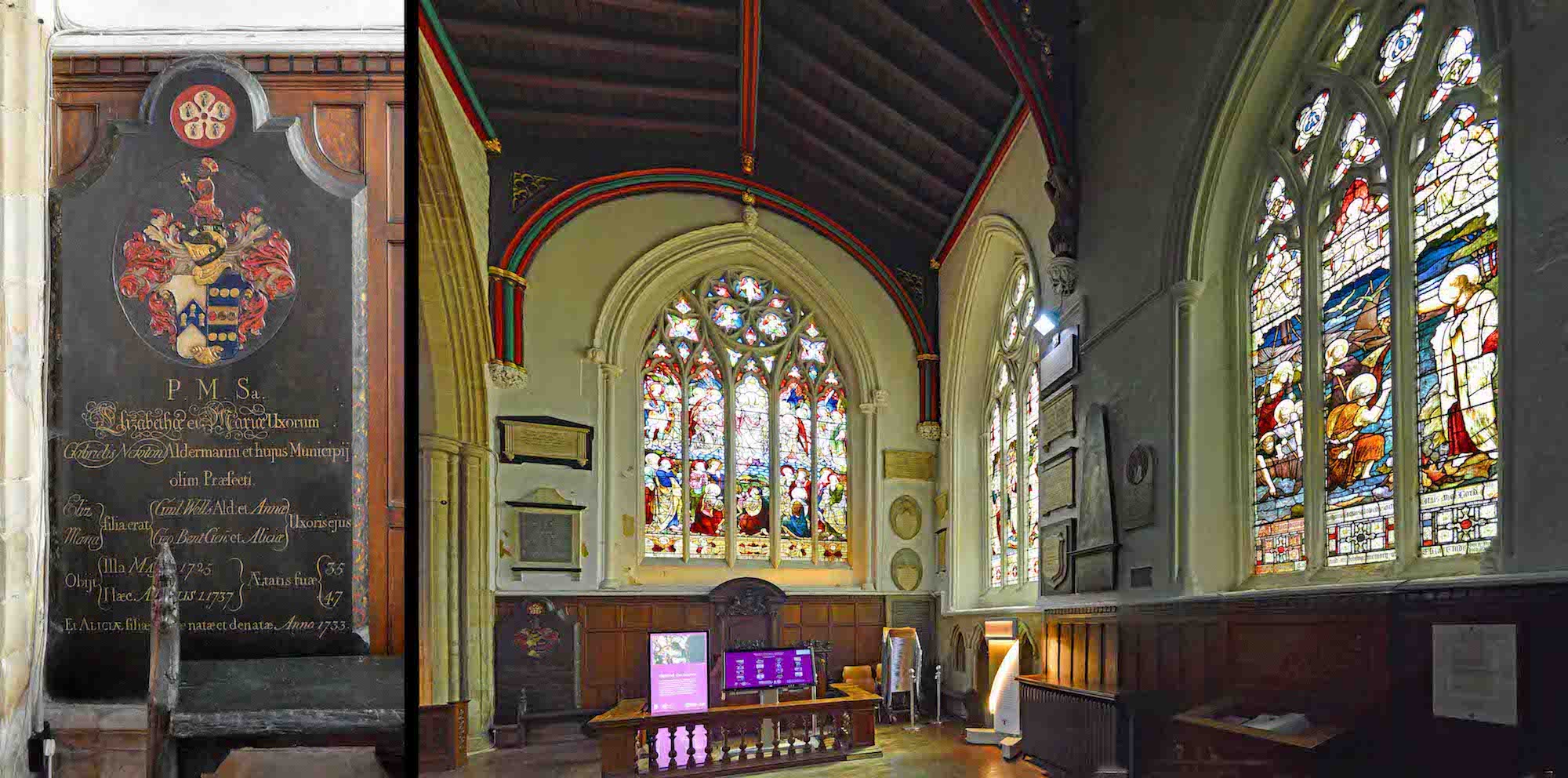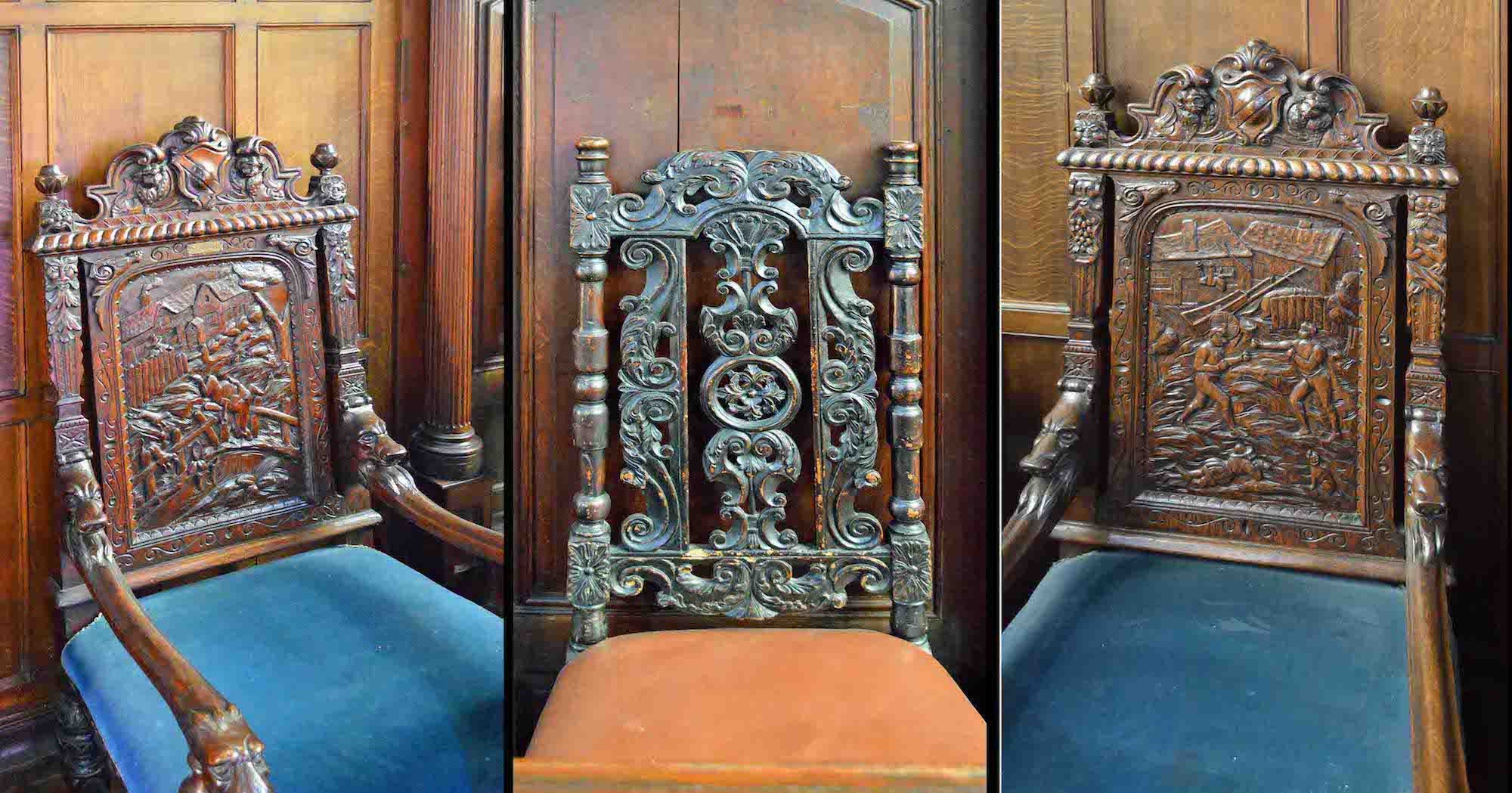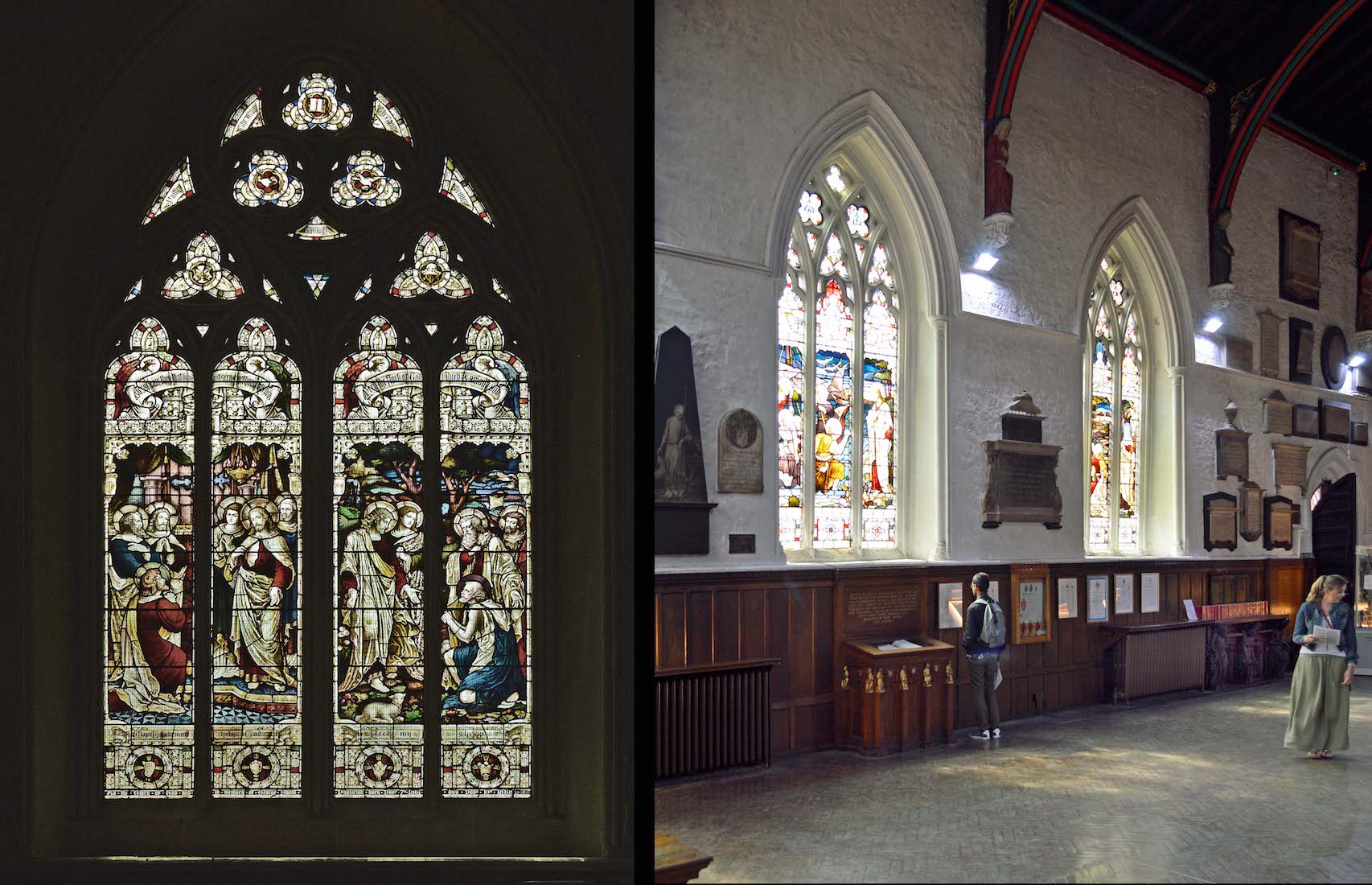41. THROUGH TO CHAPEL OF CHRIST THE KING
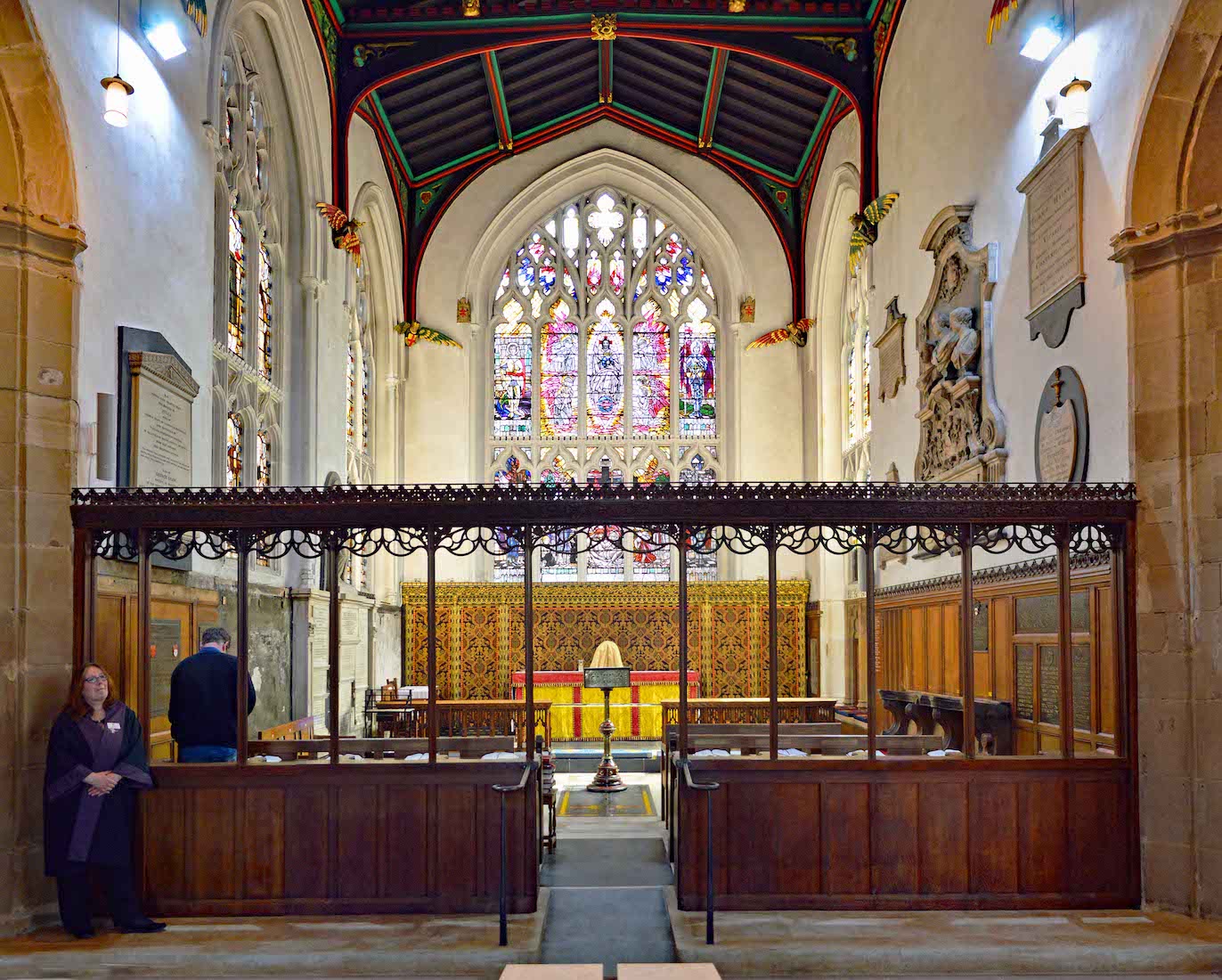
We now walk through the archway in the screen which separates the tomb of Richard III from the newly formed Chapel of Christ the King. It is clear that previously this was part of the original sanctuary and contained the high altar of the Cathedral. We observe that there are four stained glass windows in this chapel. . PLAN
42. CHAPEL OF CHRIST THE KING
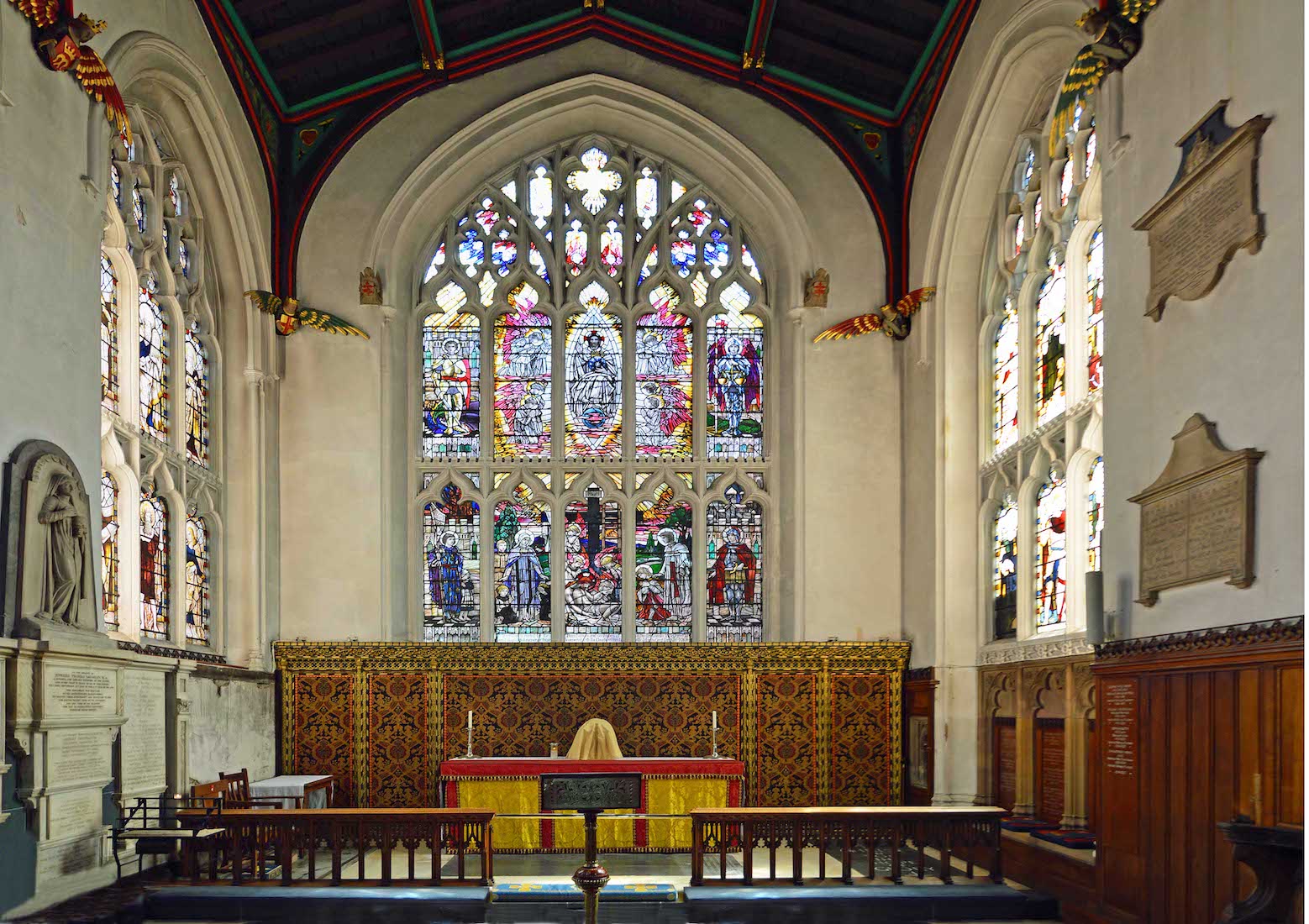
The chapel is dominated by the Great East Window before us, although we notice the windows on either side. Various memorial tablets line the walls, particularly to our left. The altar is backed by an impressive wall hanging. The reserved Host is covered on the altar, and there is also an aumbry set into the wall at right of the altar.
43. CHAPEL NORTH WINDOWS
Each of the windows in the North wall of the chapel depicts six Bible characters which, fortunately, are named. So, clockwise from top left we have in the left window: St Peter, St John, St Paul, St Bartholomew, St James Major and St Andrew. In the right window: Isaiah, Moses, Jeremiah, Daniel, St John the Baptist and Ezekiel.
44. CHAPEL EAST WINDOW
The East Window was installed as a monument to those who died in World War I. The highest lights contain a sun-like orb with cherubs radiating away from it. In the centre is Jesus surrounded by eight angels. To the far left and right stand St George and St Michael the Archangel, standing on the head and tail of a dragon. On the bottom row can be seen from left St Joan of Arc, Mary, Jesus with crying angels, Mary Magdalene, and St Martin of Tours. The window includes an image of a World War I soldier.
45. VARIOUS CHAPEL ITEMS
Six further saints are depicted in the South window of the chapel. As previously ordered, these are St Agnes, St Stephen, St Margaret, St Alban, St George and St Lawrence. The large monument on the South wall remembers George Bent who died in 1746, acknowledging all his good works. The paving slab remembers George Shaw (1801 – 1888) who was a prominent local surgeon and keen churchman.
46. CHAPEL ALTAR
This chapel altar was originally the Cathedral high altar. The construction of the Chapel of Christ the King was likely brought about by the need to locate the tomb of Richard III, but it also brings the Cathedral into line with other cathedrals in replacing the high altar with a nave altar close to the congregation. We now leave this chapel and cross to St Dunstan’s chapel. St Dunstan is the patron saint of musicians and bell ringers ... amongst others!
47. ST DUNSTAN’S CHAPEL
St Dunstan’s Chapel, located on the other side of the chancel to St Katharine's Chapel, is specially set aside for prayer. A candle burns in a hanging lamp to show that the sacrament of Christ's body and blood is kept here to take to those who are too ill to come to church, and the walls of the chapel are covered with memorials to people who have prayed in the chapel. We notice the icon corner at left.
48. ICON CORNER
The original icon ‘The Hospitality of Abraham’ was painted in 1411 by St. Andrei Rublev for the abbot of the Trinity Monastery in Russia. Rublev portrayed what has become the quintessential icon of the Holy Trinity by depicting the three mysterious strangers who visited Abraham (Genesis 18:1-15). Almost 600 years later Rublev’s icon continues to draw people into the mysterious and wonderful presence of the Trinity.
49. ICON AND MEMORIAL
Prominent in this corner is the well known icon of Mary holding the young Jesus. Called the ‘Hodigitra’ icon in Greek – meaning ‘she who shows the way’, it was painted in 1995 by the Athenian iconographer Costas Zouvelos and was a gift to the Cathedral from the Greek Orthodox Church. The icon was blessed by the Greek Orthodox Bishop Kallistos of Diokleia on February 2 1997. At right is a memorial to Fanny Elizabeth Flude: I am unsure whether the little figure is part of this.
50. ST DUNSTAN’S CHAPEL ALTAR
The altar with its carvings is of interest here. These include the Risen Christ at centre and a Nativity scene at left. Behind the altar is a carved panel showing St Dunstan, St Matthew, St Mark, St Luke, St John and St Martin. Dunstan is holding a hammer, no doubt a bell hammer, as he is the patron saint of bell ringers.
51. ST DUNSTAN’S CHAPEL WINDOWS
There are four windows in this chapel. The East window (left) shows people being raised from the dead – the widow of Nain’s son, Lazarus and Jairus’s daughter. St Dunstan was Archbishop of Canterbury in the 10th century, and scenes from his life are depicted in the Southeast window. The remaining South windows show the Risen and Glorified Christ.
52. SOUTH WALL OF CHAPEL
The South wall of the chapel is lined with memorial tablets. Those remembered include Samual Simpson, one time mayor of the borough, and John Shrosby who was parish clerk for 32 years.
53. CHAPEL CEILING
The board-lined roof of this chapel continues the red and green theme, and comprises squares with gold corner decoration.
54. BANNERS, LEAVING THE CHAPEL
We leave the St Dunstan chapel through an archway in the ornately carved screen at the West end. On either side stands a Mothers’ Union Banner. Mothers’ Union is an international Christian charity that seeks to support families worldwide. Its members are not all mothers or even all women, as there are many parents, men, widows, singles and grandparents involved in its work.
55. ROOD CROSS
Above the archway we have come through is this carved wooden rood cross – easily missed. In fact the name ‘rood cross’ may be a misnomer here. The format is right, but here the cross is empty, and there is an angel on either side. It sends a powerful message: Christ is risen!
56. NAVE FLAGS (COLOURS)
As we return to the main body of the Cathedral we notice these regimental colours. It is a common practice for the colours of disbanded regiments to be displayed in cathedrals, in memory of those who gave their lives for their country.
58. MEDIEVAL CHAPEL EAST WINDOW
This colourful stained glass window shows the Risen Christ with a host of angels appearing to his disciples. Across the top are the words ‘I go to prepare a place for you.’
59. COURT CHAIRS
A number of English cathedrals were the location of a consistory or ecclesiastical court – a place where local or ecclesiastical matters were decided. Here, beneath the East window in the Medieval Chapel was the location of the Archdeacon’s Court. This was a church court which dealt with disciplinary matters in parishes and churches. The backs of the chairs are elaborately carved: the outer scenes are probably of an historical nature.
60. CHAPEL SOUTH WINDOWS
There are three lovely large stained glass windows in the South wall of the Medieval Chapel. The Easternmost of these depicts two dramatic scenes from the life of Christ. At left we see Thomas acknowledging that Jesus is the Messiah: ‘My Lord and my God’. At right, Jesus speaks to Peter by the Sea of Galilee after the Resurrection, saying ‘Feed my sheep’.
<– TO PREVIOUS PAGE
60. CHAPEL SOUTH WINDOWS
There are three lovely large stained glass windows in the South wall of the Medieval Chapel. The Easternmost of these depicts two dramatic scenes from the life of Christ. At left we see Thomas acknowledging that Jesus is the Messiah: ‘My Lord and my God’. At right, Jesus speaks to Peter by the Sea of Galilee after the Resurrection, saying ‘Feed my sheep’.


